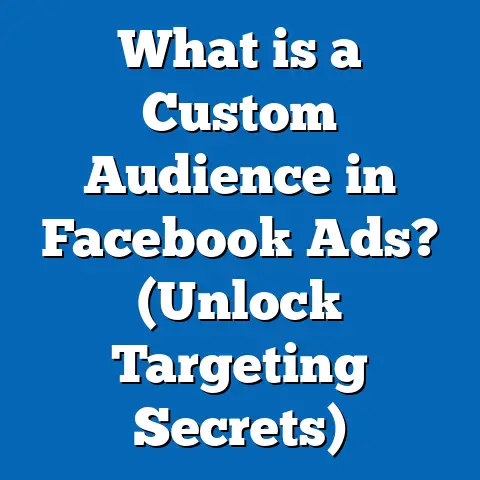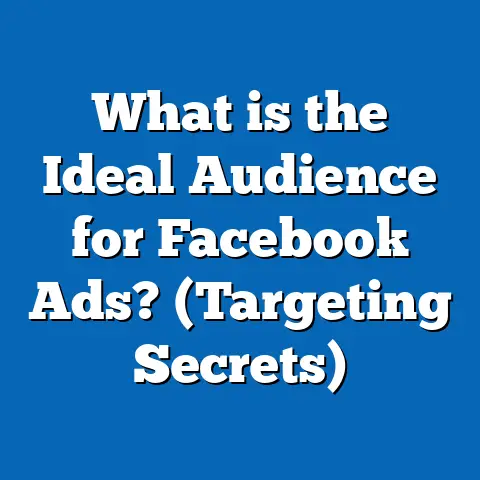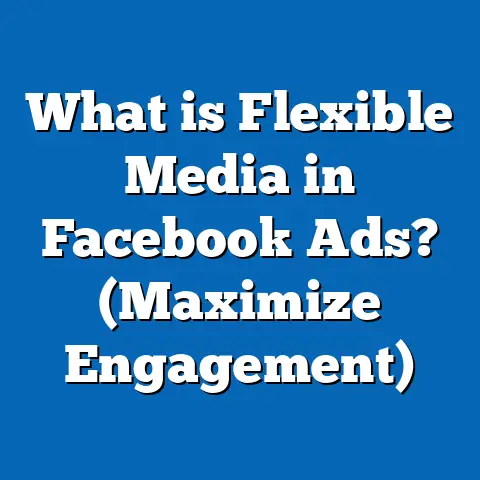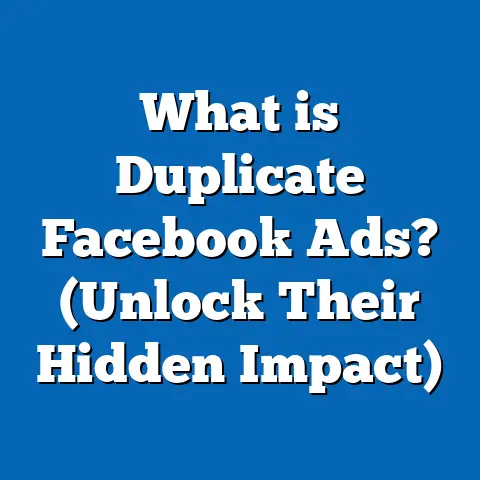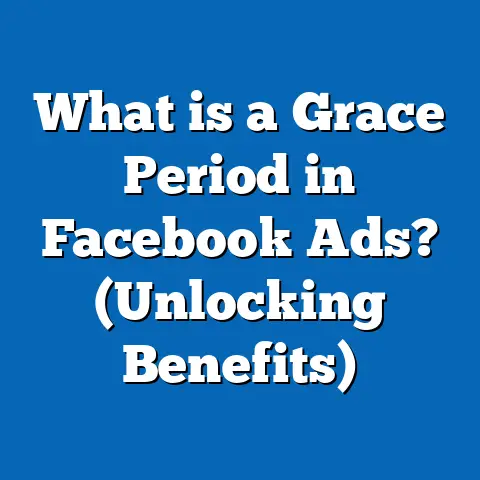What is a Paid Facebook Ad? (Unlocking Targeted Marketing)
Introduction: What If You Could Reach Your Perfect Customer Every Time?
What if every dollar you spent on advertising only reached the people most likely to buy from you? Imagine launching a campaign and instantly connecting with those who need your product right now—no wasted impressions, no guessing games. This isn’t wishful thinking; it’s the reality of paid Facebook advertising. In an era where digital noise is louder than ever, understanding how to harness paid Facebook ads can be the difference between flatlining growth and explosive success.
Understanding Paid Facebook Ads
What Is a Paid Facebook Ad?
A paid Facebook ad is any promotional content that a business pays to display on Facebook’s platform, targeting specific audiences based on demographics, interests, behaviors, and more. Unlike organic posts, paid ads guarantee visibility and are shown to users beyond your page followers, thanks to Facebook’s advanced targeting algorithms.
Why Paid Facebook Ads Matter
With over 2.98 billion monthly active users as of Q1 2024 (Statista), Facebook remains a powerhouse for digital marketing. Paid ads unlock access to this massive audience, allowing businesses to:
- Drive traffic
- Generate leads
- Boost conversions
- Build brand awareness
According to Hootsuite, 62% of marketers cite Facebook as their most important social media channel for advertising.
The Evolution of Facebook Advertising
From Organic Reach to Pay-to-Play
Early Facebook marketing relied heavily on organic reach. Brands could post content and trust that a significant portion of their followers would see it. However, by 2018, organic reach plummeted to less than 5% for most pages (Social@Ogilvy). This shift was driven by algorithm changes prioritizing personal connections over branded content, pushing marketers toward paid solutions.
The Rise of Advanced Targeting
Facebook’s ad platform evolved rapidly, introducing sophisticated targeting options:
- Custom Audiences: Upload customer lists for retargeting.
- Lookalike Audiences: Find new prospects similar to your best customers.
- Interest Targeting: Reach users based on hobbies, likes, and behaviors.
The result: advertisers can craft highly tailored campaigns that maximize ROI.
How Paid Facebook Ads Work
The Auction System
Every time a user logs in, Facebook runs a real-time auction to determine which ads to display. The winner isn’t just based on budget—Facebook considers:
- Bid Amount
- Estimated Action Rates (likelihood someone will act)
- Ad Quality and Relevance
This ensures users see ads that interest them while advertisers get maximum value for their spend.
Example:
A fitness brand and a clothing retailer both target women aged 25-35 in New York. Facebook weighs each brand’s bid, ad quality, and relevance scores before deciding whose ad gets shown to each user.
Ad Placements
Paid ads appear across multiple locations:
- News Feed (desktop/mobile)
- Stories
- Marketplace
- Right Column
- Audience Network (off-Facebook apps/sites)
- Messenger
Optimizing placement increases visibility and engagement.
Types of Paid Facebook Ads
Image Ads
Simple yet powerful, image ads use eye-catching visuals and concise copy. Perfect for brand awareness or product highlights.
Video Ads
Video content drives higher engagement. According to Meta’s internal data, users spend 5x longer watching video than static content.
Carousel Ads
Showcase up to 10 images or videos in a single ad. Ideal for highlighting product collections or telling a story.
Slideshow Ads
A lightweight alternative to video ads—use multiple images with motion, sound, and text overlays.
Collection Ads
Designed for mobile shopping, these ads open into a full-screen experience where users can browse products directly.
Lead Generation Ads
Collect user info without leaving Facebook. Proven to reduce friction and increase lead capture rates by up to 40% (WordStream).
Targeting Capabilities: Unlocking Precision Marketing
Core Audiences
Build audiences based on:
- Location
- Age
- Gender
- Interests
- Behaviors
- Languages
Custom Audiences
Reconnect with people who have already interacted with your business:
- Website visitors (via Pixel)
- App users
- Email subscribers
- Offline customers
Lookalike Audiences
Target new users who resemble your best customers. According to AdEspresso, lookalike audiences can reduce acquisition costs by up to 56% compared to broad targeting.
Advanced Layering
Combine targeting criteria for granularity. For example:
Women aged 30–45 in Chicago interested in yoga and healthy eating who visited your website in the past 30 days.
Setting Up a Paid Facebook Ad: Step-by-Step Guide
1. Define Your Objective
Choose from objectives like:
- Awareness (reach, brand awareness)
- Consideration (traffic, engagement, app installs)
- Conversion (sales, lead generation)
2. Select Your Audience
Use the targeting tools described above to outline your ideal customer profile.
3. Choose Ad Placement
Decide where your ads will appear or let Facebook optimize automatically.
4. Set Budget & Schedule
Choose daily or lifetime budgets, then set start and end dates.
5. Create Your Ad Creative
Upload images/videos, write compelling copy, and add calls-to-action.
6. Launch & Monitor
Once live, track performance through Facebook Ads Manager.
Budgeting and Bidding Strategies
How Much Do Paid Facebook Ads Cost?
Costs vary widely based on industry, audience, and competition. Average CPC (cost-per-click) is $0.97, while CPM (cost per thousand impressions) averages $7.19 (WordStream 2024).
Bidding Options
- Automatic Bidding: Let Facebook optimize for best results within your budget.
- Manual Bidding: Set maximum bids for more control over costs.
Budget Allocation Tips
- Start small and test.
- Allocate more towards high-performing audiences.
- Reinvest profits into scaling campaigns.
Measuring Success: Key Metrics & Analytics
Essential Metrics
- Impressions: Number of times your ad was shown.
- Reach: Unique users who saw your ad.
- Click-Through Rate (CTR): Percentage of viewers who clicked.
- Conversion Rate: Percentage taking desired action (purchase, sign-up).
- Cost Per Result: How much you paid per conversion/lead/sale.
- Return on Ad Spend (ROAS): Revenue generated per dollar spent.
Data Point:
According to HubSpot’s 2023 survey, the average CTR for Facebook ads is 0.90%, but top performers achieve 1.5%+ by refining creative and targeting.
Creative Best Practices: Designing High-Converting Ads
Visuals Matter
Use high-resolution images or videos that stand out in the feed. Bright colors and clear focal points perform best.
Clear Messaging & CTA
Keep text concise and actionable. Test different calls-to-action (“Shop Now,” “Learn More,” “Sign Up”) for maximum response.
A/B Testing
Run split tests on headlines, images, CTAs, and audience segments. According to Facebook’s own research, A/B testing can improve campaign results by up to 35%.
Advanced Strategies for Seasoned Marketers
Retargeting Campaigns
Use the Facebook Pixel to retarget users who:
- Visited your website
- Abandoned carts
- Watched your videos
Retargeting increases conversion rates by up to 70% compared to cold traffic (AdRoll).
Dynamic Ads
Automatically show personalized product recommendations from your catalog based on user behavior—vital for e-commerce brands.
Funnel-Based Campaign Structure
Structure campaigns around the buyer journey:
- Awareness: Broad targeting with brand-focused creative.
- Consideration: Engage warm audiences with educational content.
- Conversion: Retarget hot leads with strong offers.
Case Studies: Real Results from Paid Facebook Ads
Case Study 1: E-Commerce Fashion Brand Boosts ROAS by 400%
A US-based fashion retailer used lookalike audiences and dynamic ads during Black Friday season.
- Budget: $20K over 2 weeks
- Results: 400% ROAS ($80K revenue), 30% increase in new customer acquisition.
- Tactics: A/B testing of creatives, aggressive retargeting using abandoned cart data.
Case Study 2: Local Gym Drives Memberships with Lead Ads
A fitness center in Austin launched a lead generation campaign targeting men/women aged 25–40 within 10 miles.
- Budget: $500 over one month
- Results: 120 qualified leads at $4.16 per lead; 40% converted to memberships.
- Tactics: Offer-driven creative (“Get Your First Month Free”), follow-up via Messenger.
Comparing Paid Facebook Ads with Other Platforms
| Platform | Average CPC | Targeting Depth | Ad Formats | Audience Size |
|---|---|---|---|---|
| $0.97 | Highly granular | Image/Video/Carousel | 2.98B MAUs | |
| $1.28 | Linked with Facebook | Story/Reel/Feed | 2B MAUs | |
| Google Search | $2.69 | Keyword | Text/Shopping | 5B+ daily searches |
| $5.26 | Professional/job-based | Sponsored Content | 950M MAUs | |
| TikTok | $1.50 | Demographic/interest | Short-form video | 1B+ MAUs |
Facebook stands out for its blend of cost-effectiveness and advanced targeting options compared to other major platforms.
Latest Trends & Features in Facebook Advertising (2024–2025)
AI-Powered Campaigns
Meta has rolled out new AI tools for automated creative optimization and predictive audience targeting—helping brands boost efficiency while reducing manual work.
Enhanced Privacy & Tracking Solutions
With ongoing privacy changes (iOS updates, cookie restrictions), Facebook has introduced “Aggregated Event Measurement” and more robust server-side tracking options.
In-App Shopping Integration
Seamless checkout experiences within Facebook Shops are driving higher conversion rates—especially for mobile-first audiences.
Overcoming Common Challenges in Paid Facebook Advertising
Ad Fatigue & Banner Blindness
Rotate creatives frequently and leverage different formats to keep audiences engaged.
Rising Costs & Competition
Focus on highly relevant, niche audiences rather than broad targeting to improve efficiency as CPMs rise.
Attribution Complexity
Integrate third-party analytics tools or use Facebook’s Attribution settings to gain deeper insight into multi-touch conversions.
Actionable Steps: Launching Your First Paid Facebook Ad Campaign
- Define clear business objectives.
- Conduct deep audience research—use existing customer data for insights.
- Develop compelling creative assets tailored to your target segments.
- Set up conversion tracking with the Facebook Pixel.
- Launch small-scale test campaigns; analyze data rigorously.
- Refine targeting and creative based on performance trends.
- Scale up successful campaigns gradually; don’t be afraid to iterate.
Key Takeaways & Next Steps
Paid Facebook ads offer unmatched targeting capabilities, scalability, and measurable ROI for businesses willing to invest thoughtfully. By leveraging data-driven strategies—from precise audience segmentation to continuous creative testing—you can unlock sustainable growth in an increasingly competitive digital landscape.
Next steps:
- Audit your current digital marketing strategy; identify gaps where targeted reach can make a difference.
- Experiment with different ad formats and objectives; track results closely.
- Invest in ongoing learning—Facebook’s platform evolves rapidly; stay current with new features and best practices.
Harnessing the full potential of paid Facebook advertising requires both technical know-how and creative agility—but it puts you in the driver’s seat of modern customer acquisition like never before.

